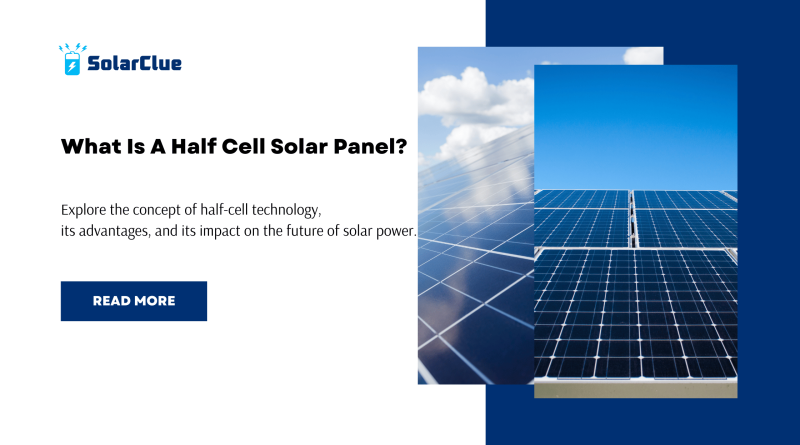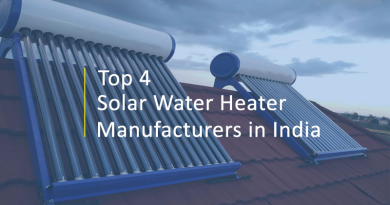What Is A Half Cell Solar Panel?
The solar industry is continuously evolving, with new technologies emerging to improve the efficiency and performance of solar panels. One such advancement is the development of half-cell solar panels, which offer several benefits over traditional full-cell panels. This blog will explore the concept of half-cell technology, its advantages, and its impact on the future of solar power.
Table of Contents
- 1 The Concept of Half-Cell Solar Panels
- 2 How Half-Cell Technology Improves Efficiency
- 3 The Impact of Shading on Half-Cell and Full-Cell Panels
- 4 Comparing the Performance of Half-Cell and Full-Cell Panels
- 5 The Cost Difference Between Half-Cell and Full-Cell Panels
- 6 The Future of Half-Cell Technology in the Solar Industry
- 7 Common Misconceptions About Half-Cell Solar Panels
- 8 The Role of Half-Cell Panels in Different Solar Applications
- 9 Conclusion
The Concept of Half-Cell Solar Panels
What Are Half-Cell Solar Panels?
Half-cell solar panels are a type of photovoltaic (PV) panel that uses solar cells split into two halves. In traditional solar panels, each solar cell is a single, unbroken unit. However, in half-cell technology, these cells are cut in half, effectively doubling the number of cells on the panel. For example, a standard full-cell panel with 60 cells would have 120 half-cells.
This division of the cells serves multiple purposes. It reduces the current flowing through each cell, which in turn reduces resistive losses and increases the overall efficiency of the panel. Additionally, half-cell panels typically have three smaller busbars instead of one large one, further enhancing their performance by reducing electrical resistance.
How Half-Cell Technology Differs from Traditional Solar Panels
The primary difference between half-cell and traditional solar panels lies in the design and layout of the solar cells. In traditional panels, each cell is full-sized, and all the cells are connected in series. This design, while effective, is subject to higher resistive losses, especially when the current flowing through the cells is high.
In half-cell panels, the cells are physically smaller and more numerous. By splitting the cells, the current is divided, and each half-cell generates less current individually. This reduction in current flow decreases resistive losses, allowing more electricity to be generated from the same amount of sunlight.
Moreover, the layout of half-cell panels is designed to improve performance under partial shading conditions. Since the cells are divided into two halves, the impact of shading on one part of the panel is minimized, which is a significant advantage over traditional full-cell panels.
How Half-Cell Technology Improves Efficiency
The Role of Reduced Resistive Losses
Resistive losses, also known as ohmic losses, occur when electricity flows through the conductive materials within a solar panel, such as the metal contacts and interconnections between cells. These losses are a natural part of the energy conversion process but can reduce the overall efficiency of the panel.
In a traditional full-cell panel, the higher current flowing through each cell leads to greater resistive losses. By contrast, half-cell panels produce lower current per cell, which significantly reduces these losses. As a result, more of the sunlight captured by the panel is converted into usable electricity, leading to higher efficiency.
For example, a half-cell panel might have an efficiency improvement of 2-3% compared to its full-cell counterpart, which can make a significant difference in the total energy output over the panel’s lifespan.
Increased Power Output
In addition to reducing resistive losses, half-cell technology increases the overall power output of solar panels. The design of half-cell panels allows them to generate more electricity even under less-than-ideal conditions, such as when the sun is not directly overhead or when part of the panel is shaded.
The increased power output is a direct result of the improved electrical performance and better shading tolerance offered by half-cell technology. In real-world conditions, this means that half-cell panels can produce more energy throughout the day, especially during the morning and evening hours when shading and lower sunlight angles are more common.
This increased power output makes half-cell panels an attractive option for both residential and commercial solar installations, where maximizing energy production is a key consideration.
The Impact of Shading on Half-Cell and Full-Cell Panels
How Shading Affects Full-Cell Panels
Shading is one of the most significant factors that can impact the performance of solar panels. In a traditional full-cell panel, the cells are connected in series, meaning that the current flows through each cell sequentially. If a part of the panel is shaded, even slightly, it can cause a dramatic drop in the overall power output.
This is because shading on just one cell in a series string can reduce the current flow through the entire string, effectively reducing the performance of the entire panel. The more cells that are shaded, the more significant the loss in power production. In some cases, partial shading can lead to hot spots, which are areas of increased heat that can damage the panel over time.
Improved Shade Tolerance in Half-Cell Panels
Half-cell solar panels are specifically designed to mitigate the effects of shading, offering improved performance in scenarios where shading is unavoidable. In a half-cell panel, the cells are divided into two separate halves, with each half operating independently. This means that if one part of the panel is shaded, the other half can continue to produce electricity with minimal impact on the overall power output.
Moreover, half-cell panels typically feature more bypass diodes, which are components that allow the current to bypass shaded or malfunctioning cells. This further enhances their ability to maintain performance under partial shading. The design and layout of half-cell panels mean that shading has a less pronounced effect on their energy production compared to full-cell panels.
For example, if a tree branch shades a portion of a half-cell panel, the impact on energy production would be less severe than if the same shading occurred on a full-cell panel. This improved shade tolerance makes half-cell panels particularly advantageous in installations where shading is a concern, such as in urban environments or areas with tall buildings and trees.
Comparing the Performance of Half-Cell and Full-Cell Panels
Energy Production and Efficiency
When comparing half-cell and full-cell solar panels, one of the most important factors to consider is energy production and efficiency. As mentioned earlier, half-cell panels generally offer higher efficiency due to reduced resistive losses and improved performance under partial shading conditions. This leads to a higher energy output over time, making half-cell panels more effective in converting sunlight into electricity.
In controlled tests, half-cell panels have been shown to produce up to 5% more energy than comparable full-cell panels under the same conditions. This increased efficiency translates into better overall performance, especially in real-world environments where factors like shading, dirt accumulation, and temperature variations can affect energy production.
Durability and Longevity
Both half-cell and full-cell solar panels are designed to be durable and long-lasting, with most panels having a lifespan of 25 to 30 years. However, the design of half-cell panels can offer some advantages in terms of durability.
The lower current in each half-cell reduces thermal stress on the panel, which can help prevent the development of hot spots and microcracks over time. This reduced thermal stress contributes to the overall longevity of the panel, potentially allowing it to maintain higher performance for a longer period compared to full-cell panels.
Additionally, the increased number of bypass diodes in half-cell panels not only improves shading tolerance but also enhances the panel’s ability to cope with partial failures. If one part of the panel becomes damaged or malfunctions, the remaining sections can continue to operate effectively, reducing the risk of total panel failure.
Overall, while both types of panels are robust and built to withstand harsh environmental conditions, half-cell panels may offer slightly better durability and longevity due to their innovative design and improved thermal management.
The Cost Difference Between Half-Cell and Full-Cell Panels
Manufacturing Costs and Complexity
The manufacturing process for half-cell solar panels is more complex than that for full-cell panels, primarily because it involves cutting each cell in half and incorporating additional busbars and bypass diodes. This increased complexity can lead to higher production costs, which may be reflected in the price of half-cell panels.
However, advancements in manufacturing technology and economies of scale have helped to narrow the cost difference between half-cell and full-cell panels. As half-cell technology becomes more widespread, the cost gap is expected to continue shrinking, making half-cell panels more accessible to a broader range of consumers.
Long-Term Cost Efficiency
While half-cell panels may have a higher upfront cost due to their more complex manufacturing process, they often provide better long-term cost efficiency. The increased energy production and improved durability of half-cell panels can lead to higher returns on investment over the life of the system.
For example, in an installation where shading is a concern, the superior performance of half-cell panels can result in more consistent energy output and lower maintenance costs. This, in turn, can offset the initial higher cost of the panels, making them a more cost-effective option in the long run.
Additionally, the reduced degradation rates and enhanced longevity of half-cell panels mean that they are likely to maintain higher efficiency levels for longer, further enhancing their long-term value. When considering the total cost of ownership, including installation, maintenance, and energy production, half-cell panels often prove to be a financially sound investment.
The Future of Half-Cell Technology in the Solar Industry
Trends in Solar Panel Innovation
The solar industry is continuously evolving, with innovations aimed at improving efficiency, reducing costs, and making solar energy more accessible. Half-cell technology is one of the most promising advancements in this space, offering tangible benefits in terms of performance and durability. As manufacturers refine the production processes and reduce costs, half-cell panels are expected to become the standard for both residential and commercial installations.
One significant trend is the integration of half-cell technology with other emerging solar technologies, such as bifacial panels, which capture sunlight on both sides of the panel. Combining these technologies could lead to even greater efficiency gains, making solar power an increasingly competitive energy source.
Another trend is the increasing use of advanced materials and coatings that enhance the performance of half-cell panels. These innovations aim to further reduce resistive losses, improve shading tolerance, and extend the lifespan of the panels, contributing to the overall growth and adoption of solar energy worldwide.
Integration with Other Solar Technologies
Half-cell technology is well-suited for integration with other solar technologies, allowing for more versatile and efficient solar energy systems. For example, half-cell panels can be combined with smart solar inverters that optimize the performance of each panel individually, ensuring maximum energy output even in challenging conditions.
Moreover, as energy storage systems become more affordable and widely adopted, half-cell panels can be paired with battery storage solutions to create reliable, off-grid power systems. These systems can store excess energy generated during the day for use at night or during periods of low sunlight, further enhancing the value of solar energy.
The versatility of half-cell technology also makes it ideal for use in innovative applications such as solar-powered vehicles, portable solar generators, and building-integrated photovoltaics (BIPV). As the demand for clean, renewable energy continues to grow, half-cell technology will play a crucial role in meeting this demand through its adaptability and efficiency.
Common Misconceptions About Half-Cell Solar Panels
Misconception: Half-Cells Are Less Reliable
One common misconception about half-cell solar panels is that they are less reliable than traditional full-cell panels due to their more complex design. However, the opposite is true. The design of half-cell panels actually enhances their reliability by reducing resistive losses and improving shade tolerance. The increased number of bypass diodes also means that half-cell panels are better equipped to handle partial shading and other common issues, making them more reliable in real-world conditions.
Additionally, the reduced thermal stress on half-cells helps prevent the formation of hot spots, which can damage panels over time. As a result, half-cell panels often have longer lifespans and better overall durability compared to full-cell panels.
Misconception: Half-Cell Panels Are More Expensive
Another misconception is that half-cell solar panels are significantly more expensive than full-cell panels. While it’s true that half-cell panels may have a slightly higher upfront cost due to the complexity of their manufacturing process, the difference in price has been decreasing as production techniques improve and the technology becomes more widespread.
Moreover, when considering the total cost of ownership, half-cell panels often prove to be more cost-effective due to their higher efficiency, better performance under shading, and longer lifespan. These factors contribute to lower maintenance costs and higher energy production over time, making half-cell panels a financially sound investment.
The Role of Half-Cell Panels in Different Solar Applications
Residential Solar Installations
Half-cell solar panels are particularly well-suited for residential solar installations. Homeowners can benefit from the increased efficiency and improved shading tolerance offered by half-cell panels, especially in areas where shading from trees or nearby buildings might be an issue. The enhanced durability and reliability of half-cell panels also mean fewer maintenance concerns and a longer lifespan, making them a valuable addition to any home’s energy system.
Commercial and Industrial Applications
In commercial and industrial settings, where maximizing energy production and efficiency is critical, half-cell solar panels offer distinct advantages. Their ability to perform well under partial shading and their higher energy output make them ideal for large-scale installations, such as solar farms, manufacturing facilities, and office buildings. The reduced risk of power loss due to shading or other environmental factors ensures that businesses can rely on consistent energy production, reducing operational costs and improving sustainability.
Off-Grid and Mobile Solar Solutions
Half-cell solar panels are also well-suited for off-grid and mobile solar applications, such as in remote locations, RVs, boats, and portable solar generators. The increased efficiency and reliability of half-cell technology make it possible to generate sufficient power even in less-than-ideal conditions. This makes half-cell panels a practical choice for those who need dependable, portable solar energy in a variety of environments.
Conclusion
Half-cell solar panels represent a significant advancement in solar technology, offering numerous benefits over traditional full-cell panels. With improved efficiency, enhanced shading tolerance, and reduced power loss, half-cell panels are becoming the preferred choice for both residential and commercial solar installations. While they may come with a slightly higher upfront cost, the long-term advantages in terms of performance, durability, and energy production make them a sound investment.
As the solar industry continues to innovate, half-cell technology is expected to play a pivotal role in advancing solar power and making it more accessible and efficient. Whether for a home, a business, or an off-grid application, half-cell solar panels offer a versatile and reliable solution for harnessing the power of the sun.
Here at SolarClue®, we offer a smart, practical, and “beautiful” solution. You will be answered for all the questions related to Solar.
We provide all kinds of brands that are the Best Solar panels in India.
If you are the one who is planning for the solar power system. Don’t hesitate to contact our team!
Looking forward to empowering you with solar energy, just like hundreds of our other clients!
Frequently Asked Questions (FAQs)
1. How do half-cell solar panels improve efficiency?
Half-cell solar panels improve efficiency by reducing resistive losses and increasing the number of cells, which allows for better current distribution and higher power output.
2. Are half-cell solar panels more expensive than traditional full-cell panels?
While half-cell panels may have a slightly higher upfront cost, their improved performance and long-term cost efficiency often make them a better investment.
3. How do half-cell panels perform under shading compared to full-cell panels?
Half-cell panels offer improved shading tolerance due to their design, which minimizes the impact of shading on energy production, making them more effective than full-cell panels in partially shaded conditions.
4. What are the key applications for half-cell solar panels?
Half-cell solar panels are ideal for residential installations, commercial and industrial projects, and off-grid or mobile solar solutions due to their enhanced efficiency and reliability.
5. What is the future of half-cell technology in the solar industry?
The future of half-cell technology is promising, with ongoing advancements expected to further improve efficiency, reduce costs, and expand its applications in the solar industry.




